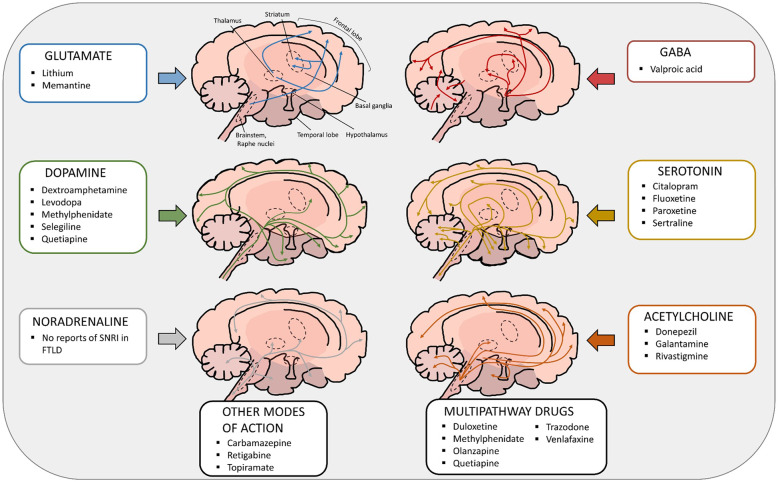Fig. 1. Neurotransmitter pathways involved in FTLD and current therapeutics affecting the different neurotransmitter systems.
FTLD has been linked to changes in several principal neurotransmitter systems such as the glutamatergic, GABAergic, dopaminergic and serotonergic systems. Due to the lack of officially validated and approved pharmacological therapies for FTLD, off-label medications targeting different neurotransmitter systems, indicated here, to alleviate the clinical symptoms are commonly used. Drugs with other modes of action are also in use. For instance, retigabine acts as a positive allosteric modulator of the neuronal potassium channels KNCQ (Kv2 to 5), carbamazepine preferentially binds to voltage-gated sodium channels in their inactive conformation, which prevents repetitive and sustained firing of an action potential, and topiramate blocks voltage-dependent sodium and calcium channels. There are several drugs (listed in the multipathway drug box) that act simultaneously on different pathways. For example, methylphenidate and quetiapine affect both dopaminergic and noradrenergic pathways. Also, antidepressants such as duloxetine and venlafaxine affect the noradrenergic system but have also other targets. Some drugs have multiple targets such as trazodone (serotonin, histamine, and α1-adrenergic receptors, serotonin reuptake) and olanzapine (dopamine, serotonin, α1-adrenergic, muscarinic receptors). The mode of action of olanzapine is not completely clear and it may possibly act through the dopaminergic, serotonergic or cholinergic pathways. Currently there are no selective serotonin-noradrenaline re-uptake inhibitors (SNRI) targeting the noradrenaline system on the market.

